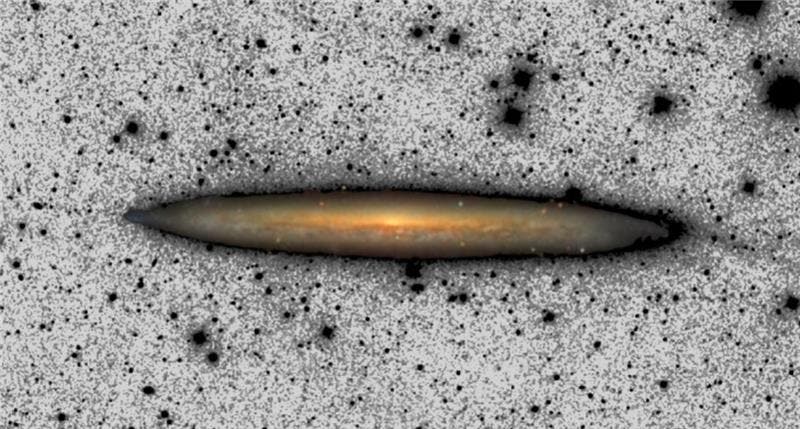Our galaxy is growing at an impressive size of around 500 meters per second, according to a new study.
We think of the Earth as being this giant, rigid ball floating through space, always unchanged, always the same. But nothing is unchanged. The Earth has mobile tectonic plates which constantly change the appearance of the surface. The Sun itself formed billions of years ago, and billions of years in the future, it will explode into a supernova and dim down. The more you zoom out to a bigger perspective, nothing is fixed and everything changes. Galaxies are no exception.
Our home galaxy, the Milky Way, consists of 100-400 billion stars, with huge amounts of gas and dust, staying together as a unitary structure thanks to the force of gravity. The Milky Way also embodies stars of different ages: massive, hot, blue stars have a tumultuous but relatively short-lived lifespan of a few million years, whereas lighter, redder stars can live on for hundreds of billions of years.
The younger, short-lived stars dominate the disc of the galaxy, where new stars are continuously formed. However, some stellar formation areas are also found at the outer edge of the disc, and cosmological models, as well as observations on other galaxies, indicate that these areas constantly accumulate more material, leading to a growth of the overall size of the Milky Way.
Ironically, in many ways, it’s more difficult to study the Milky Way than other galaxies, which we can observe from outside.
In a new study, Cristina Martínez-Lombilla, a PhD candidate at the Instituto de Astrofísica de Canarias in Tenerife, Spain, and her collaborators, wanted to see if the Milky Way (and other similar galaxies) do increase in size, and what this means for our cosmic neighborhood.
They used SDSS telescope for optical data, and the two space telescopes GALEX and Spitzer for near-UV and near-infrared data respectively, analyzing the colors and the motions of the stars at the end of the disc of other galaxies. They were especially interested in measuring the vertical movement of these stars. Based on this data, they calculated that the Milky Way is expanding at a speed of 500 meters per second.
“The Milky Way is pretty big already. But our work shows that at least the visible part of it is slowly increasing in size, as stars form on the galactic outskirts,” says Martínez-Lombilla. “It won’t be quick, but if you could travel forward in time and look at the galaxy in 3 billion years’ time it would be about 5% bigger than today.”
However, while a 5% growth is significant, it won’t grow much beyond that — the Milky Way is expected to go through a gargantuan collision with our neighboring galaxy, Andromeda, 4 billion years in the future.










